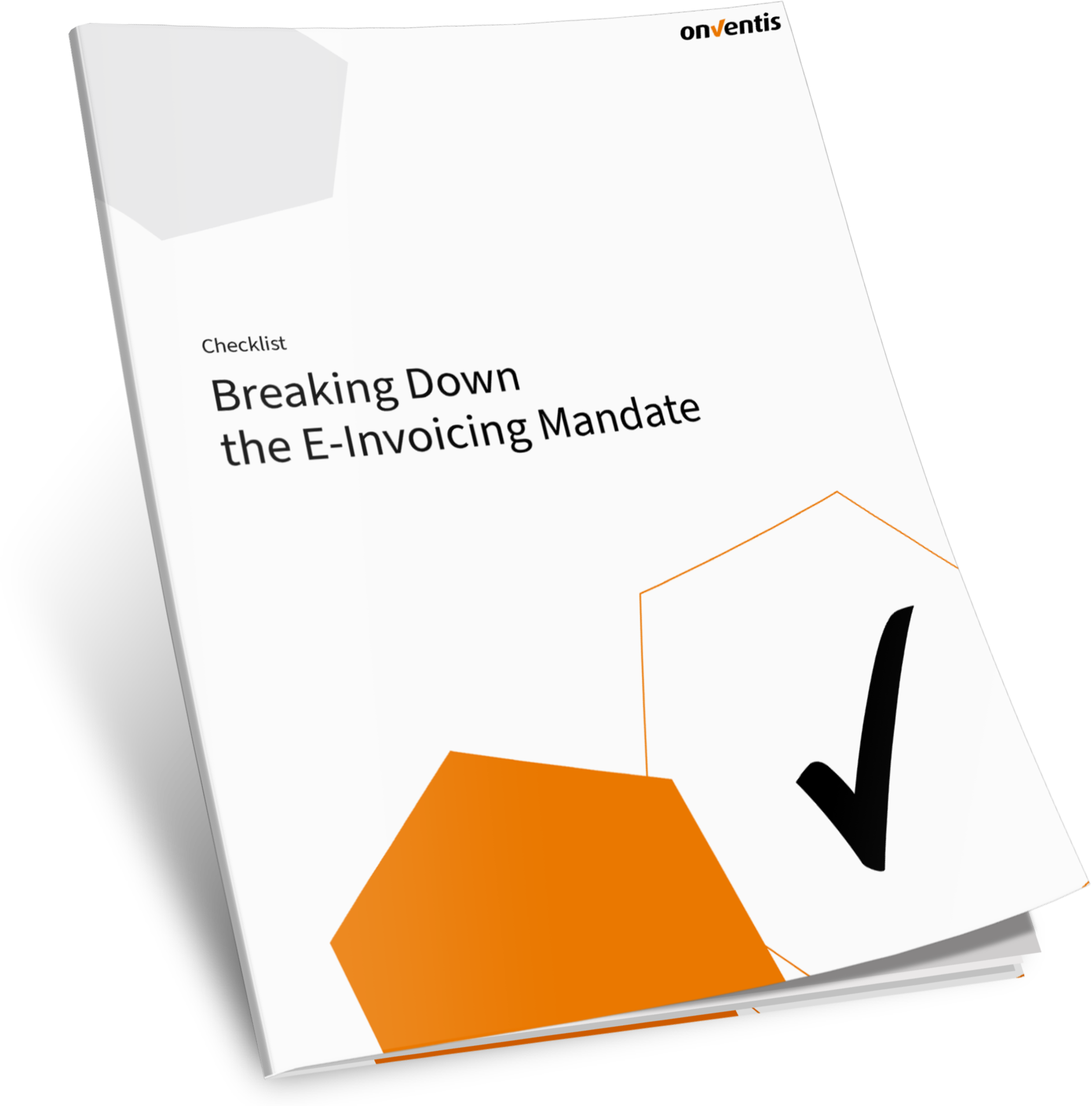E-Invoicing: The Future of Digital Invoicing
As businesses increasingly embrace digital transformation, e-invoicing is becoming a critical tool for efficiency and compliance. By automating the invoicing process, companies can reduce costs, minimize errors, and meet legal requirements in various regions. In this blog, we will delve into e-invoicing, its advantages, regulatory aspects, and challenges in adopting this digital solution.

What is E-Invoicing?
E-invoicing involves creating, transmitting, and processing of invoices in a digital format that allows for automated handling. Unlike digital invoices sent as PDFs, e-invoices contain structured data (such as XML or EDI formats) that can be seamlessly integrated into financial systems for further processing. This format supports compliance with international standards and enables faster data exchange between businesses, government bodies, and tax authorities.
Key Benefits of E-Invoicing
- Operational Efficiency: Automating invoicing processes shortens the payment cycle by reducing manual input and minimizing the risk of errors. E-invoices can be processed immediately, accelerating approvals and payments, improving cash flow.
- Cost Reduction: Traditional paper-based invoicing entails significant printing, postage, and manual processing costs. E-invoicing eliminates these expenses, leading to substantial savings. Automated invoice matching and approval workflows also free up accounting teams to focus on higher-value tasks.
- Enhanced Accuracy and Compliance: E-invoicing reduces the likelihood of errors commonly associated with manual data entry. It also aligns with various regulatory requirements, as many countries are mandating e-invoicing to combat tax fraud and improve transparency.
- Environmental Impact: By switching to e-invoicing, companies contribute to sustainability goals. Reducing paper use helps lower the carbon footprint and aligns with global environmental standards.
- Improved Security: Digital invoices incorporate encryption and other security measures, safeguarding sensitive financial data and reducing the risk of document fraud. Features like digital signatures and real-time validation add an extra layer of protection against unauthorized modifications.
E-Invoicing Formats and Standards
E-invoicing formats vary across regions, with some of the most common being:
- EDI (Electronic Data Interchange): A standardized format for the electronic exchange of business documents, commonly used in industries with high transaction volumes, such as retail and automotive. EDI helps eliminate manual data entry by enabling direct data exchange between systems.
- XML Formats: XML-based standards like UBL (Universal Business Language) and XRechnung provide flexibility for handling complex data structures and are widely used across Europe. XRechnung, in particular, is the standard format for B2G (business-to-government) e-invoicing in Germany.
- ZUGFeRD (Zentraler User Guide des Forums elektronische Rechnung Deutschland): A hybrid e-invoicing format that combines structured XML data with a human-readable PDF. ZUGFeRD is popular in Germany and other European countries for its flexibility, allowing the invoice to be processed automatically by systems while still being accessible to humans. It is particularly beneficial for small and medium-sized enterprises looking for a straightforward solution to integrate e-invoicing without major system changes.
- Peppol (Pan-European Public Procurement Online): An international standard and network that facilitates e-invoicing and e-procurement across Europe, Australia, New Zealand, and beyond. It provides a secure and interoperable framework, making cross-border transactions more seamless.
The choice of e-invoicing format often depends on regional regulations, business requirements, and the need for integration with existing financial systems. Standardized formats like ZUGFeRD or Peppol help companies ensure compliance while optimizing their invoicing processes.
Regulatory Landscape
Governments worldwide are driving the adoption of e-invoicing through mandates aimed at improving tax compliance, transparency, and efficiency. The European Union’s Directive 2014/55/EU, for instance, requires e-invoicing for public procurement, and many member states are extending these requirements to B2B transactions.
Germany has implemented several significant regulations for e-invoicing. Starting January 1, 2025, all companies involved in B2B transactions will be required to issue e-invoices in structured formats like XRechnung or ZUGFeRD. This mandate follows Germany’s existing B2G (business-to-government) e-invoicing requirements, which has been in place since 2020. The transition aims to streamline financial operations and ensure compliance with the EU’s regulatory framework.
During the transition period, businesses will still have the option to use traditional invoices under certain conditions until the end of 2026. Companies with annual revenues below €800,000 will have additional flexibility until 2027. From 2028 onward, however, e-invoicing will become mandatory for all B2B transactions without exceptions. These regulations are intended to enhance financial reporting accuracy and reduce administrative burdens for businesses and tax authorities.
In the U.S., although there is no federal mandate yet, there is a growing push toward e-invoicing, driven by the benefits of cost savings and efficiency. In other regions like Latin America and the Middle East, countries are adopting stringent e-invoicing regulations to combat tax evasion and improve fiscal transparency.

Breaking Down the E-Invoicing Mandate: What You Should Now
Challenges in E-Invoicing Adoption
Despite its benefits, e-invoicing presents several challenges:
- Integration with Existing Systems: Businesses may face difficulties integrating e-invoicing solutions with legacy accounting and ERP systems. Choosing flexible software with robust integration capabilities is key.
- Compliance with Diverse Regulations: Companies operating in multiple jurisdictions must navigate different e-invoicing requirements. Staying updated on regional mandates is essential to maintain compliance.
- Change Management: Transitioning to e-invoicing often requires organizational changes, including employee training and process reengineering.
We put together a whitepaper to make the transition as easy as possible for you. Find out all about implementing a lean invoice-to-pay process!
Conclusion
E-invoicing is more than just digitizing invoices; it’s a strategic move towards automated financial processes that offer significant benefits. With mandates becoming more common globally, companies that adopt e-invoicing early will enjoy cost savings, enhanced efficiency, and better compliance. The future of invoicing is undoubtedly digital, and businesses should prepare to embrace it fully.
Q&A:
- What is the main difference between e-invoicing and sending PDF invoices via email?
E-invoicing uses structured data formats like EDI or XML that allow for automatic processing, whereas PDF invoices require manual handling and are less efficient. - Who will be required to issue e-invoices starting in 2025?
Starting 2025, all companies in Germany involved in B2B transactions will be required to issue e-invoices. This also applies to businesses working with public sector clients. The e-invoices must be in structured formats such as XRechnung or ZUGFeRD. Transition rules apply based on company size. Get all the details on the regulations here! - How does the Peppol network work?
Peppol enables the secure and standardized exchange of invoices and business documents across Europe. It is especially useful for cross-border trade, improving interoperability. - What steps are necessary to integrate e-invoicing into a company successfully?
Key steps include analyzing existing processes, selecting the appropriate software solution, training employees, and gradually implementing the new system with testing phases.
Weitere BlogsMore BlogsMeer blogs




